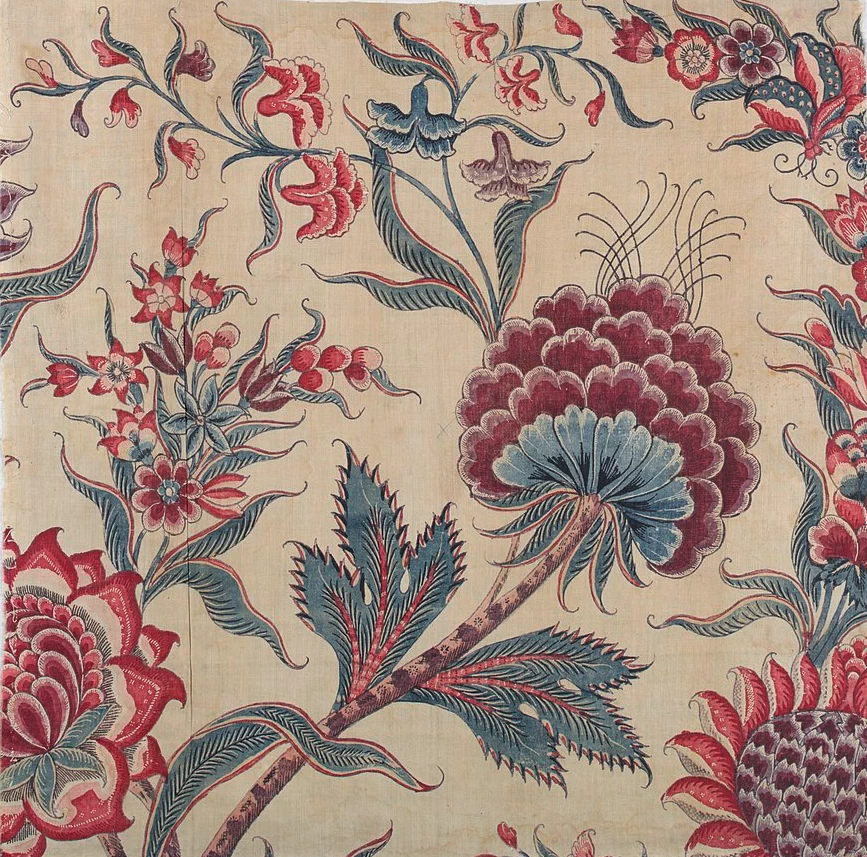Chintz is a printed, painted, stained or glazed calico textile to which mordants and resists have been used to help dyes adhere, a technique developed thousands of years ago in modern-day India and Pakistan.[1][a]Calico is a plain white or unbleached cotton cloth.[2] The material was first exported to England from Calicut in India, later Calcutta, now renamed Kolkata.[2] A material typically used for upholstery or curtains, the name is an English variation of the Hindi word chīnṭ,[3] meaning “spotted, variegated, speckled, or sprayed”.[1]
The term began to be used in Europe for both painted and printed calicos during the 17th century,[4] and today is a catch-all for “gaudy floral designs”.[1]

